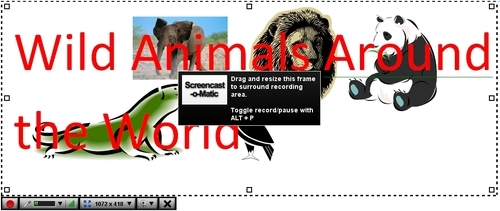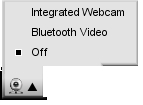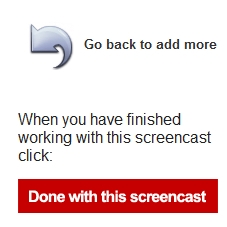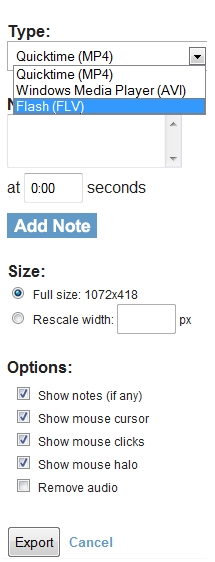In this recipe, we create a screencast and upload it to our Moodle course. The baseline topic is Wildlife. Therefore, in this recipe, we will explain to our students where wild animals are located. We can paste in a world map of the different animals, while we add extra data through the audio files. Thus, we can also add more information using different types of images that are inserted in the map.
Before creating the screencast, plan the whole sequence of the explanation that we want to show to our students, therefore, we will use a very useful Java applet available at http://www.screencast-o-matic.com/.
Screencast-o-matic requires the free Java Run-time Environment (also known as JRE) for both the teacher and the students' computers. You can download and install its latest version from http://java.sun.com.
First of all, design the background scene of the screencast to work with. Afterwards, enter the website http://www.screencast-o-matic.com/. Follow these to create the screencast:
- Click on Start recording.
- Another pop-up window appears that looks as shown in the following screenshot:

- Resize the frame to surround the recording area that you want to record.
- Click on the recording button (red button).
- If you want to make a pause, click on the pause button or Alt + P, as shown in the following screenshot:

- If you want to integrate the webcam or a bluetooth video, click on the upwards arrow in this icon, as shown in the following screenshot:

- When the screencast is finished, click on Done.
- You can preview the screencast after you finish designing it. If you need to edit it, click on Go back to add more. If you are satisfied with the preview, click on Done with this screencast, as shown in the following screenshot:

- When the screencast is finished, our next task is to export it because we need to upload it to our Moodle course. Click on Export Movie.
- Click on the downwards arrow in Type and choose Flash (FLV), as shown in the following screenshot:

- Customize the Size and Options blocks, as shown in the previous screenshot or as you wish. When you finish, click on Export, as shown in the previous screenshot.
- Write a name for this file and click on Save.
- When the file is exported, click on Go back and do more with this screencast if you want to edit it.
- Click on Done with this screencast if you are satisfied with the result. A pop-up window appears, click on OK.
We have just created the screencast teaching about wild animals, which students have to watch to learn about the places where wild animals live around the world. We need to upload it to our Moodle course. It is a passive resource; therefore, we can add a resource or design an activity out of it. In this case, we design an activity. Choose the weekly outline section where you want to insert it, and follow these steps:
- Click on Add an activity | Online text within Assignments.
- Complete the Assignment name and Description blocks.
- Click on the Moodle Media icon | Find or upload a sound, video or applet ... | Upload a file | Browse | look for the file that you want to upload and click on it.
- Click on Open | Upload this file | Insert.
- Click on Save and return to course.
- Click on the activity. It looks as shown in the following screenshot:

In the case that we create a screencast, which lasts for around 30 minutes or longer, it will take a long time to upload it to our Moodle course. Therefore, it will be advisable to watch the screencast using a free and open source media player, that is to say VLC Media Player.
You can download the VLC Media Player from the following website: http://www.videolan.org/vlc/. It works with most popular video files formats such as AVI, MP4, and Flash, among others. Follow these steps in order to watch the screencast:
- Click on Media | Open File | browse for the file that you want to open and click on it.
- Click on Open. The screencast is displayed, as shown in the following screenshot:

